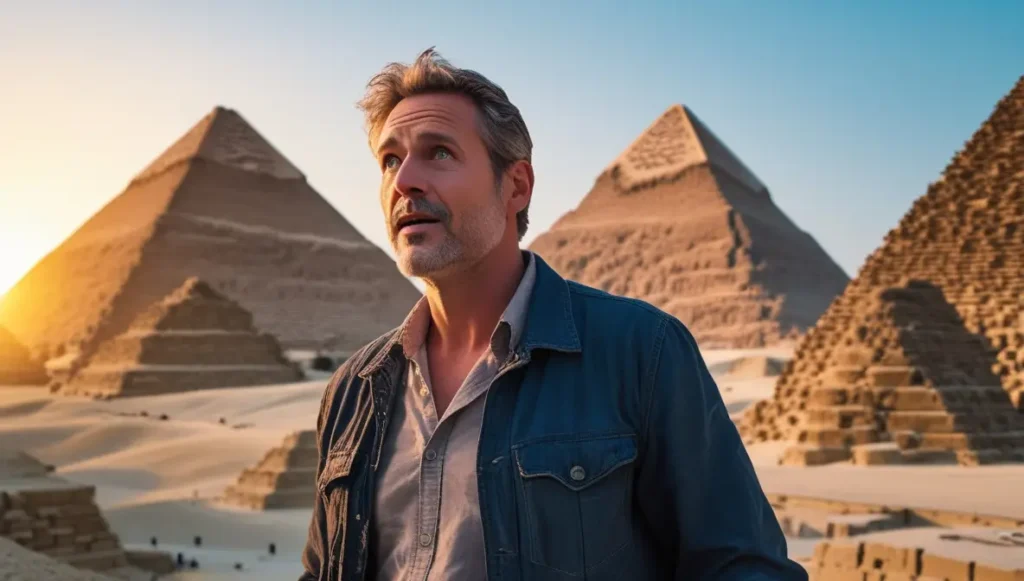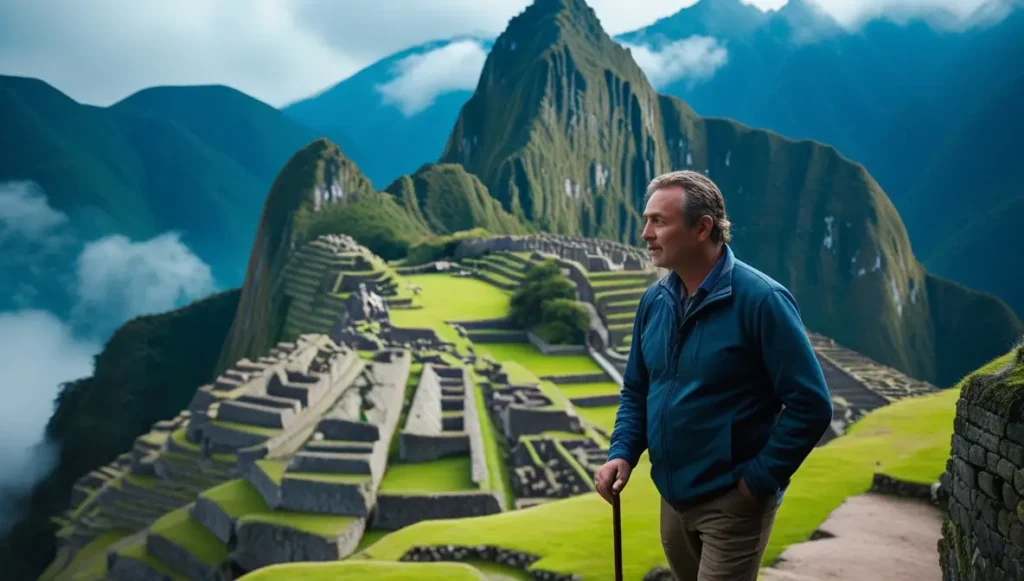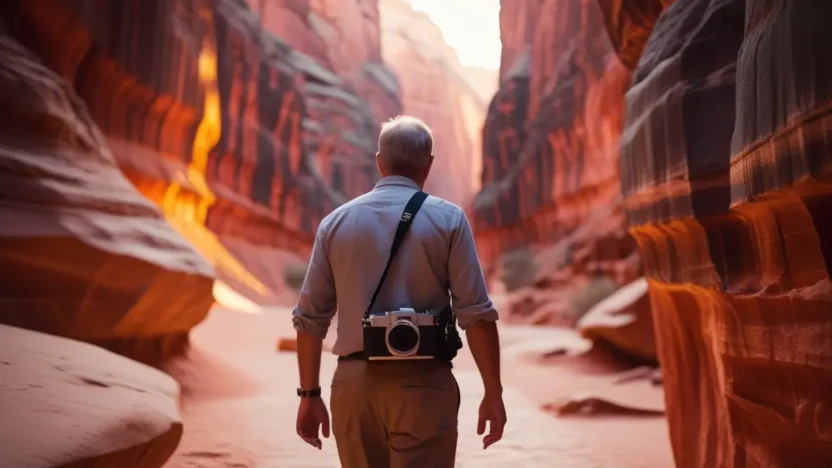Traveling to historical sites is more than just a journey through time; it’s an opportunity to connect with the past, reflect on human achievements, and gain a deeper understanding of our shared history. For men in their early 50s, this type of travel can be particularly enriching. It offers a chance to step away from the hustle of daily life and immerse oneself in stories that have shaped civilizations. Whether you’re planning your next adventure or simply curious about the world’s most iconic landmarks, this guide will take you through must-visit historical sites worldwide.
Why Explore Historical Sites?
Before diving into specific destinations, it’s worth considering why exploring historical sites holds such appeal. For many men in their early 50s, this phase of life often brings a desire for meaningful experiences. Historical sites provide a unique blend of education, inspiration, and reflection. They allow you to witness the ingenuity of ancient architects, the resilience of past generations, and the cultural evolution that has led to the modern world.
“History is not just a collection of dates and events; it’s a tapestry of human stories waiting to be discovered.”
Visiting these sites isn’t just about admiring ruins or monuments—it’s about connecting with the spirit of those who came before us. Every stone, artifact, and inscription tells a story, and these stories can offer valuable lessons about perseverance, innovation, and humanity.

The Wonders of Ancient Egypt: Pyramids of Giza
No list of historical sites would be complete without mentioning the Pyramids of Giza. Located on the outskirts of Cairo, these structures are among the most recognizable symbols of ancient civilization. Built over 4,500 years ago, the pyramids were constructed as tombs for pharaohs, showcasing the Egyptians’ mastery of engineering and astronomy.
For a man in his early 50s, visiting the Pyramids of Giza can be a transformative experience. Standing in front of these colossal structures, you’ll feel a profound sense of awe at the scale of human ambition. The nearby Sphinx, with its enigmatic expression, adds an air of mystery to the site. Guided tours often include insights into Egyptian mythology and the techniques used to build these marvels, making the visit both educational and inspiring.
If you’re planning a trip, consider visiting during the cooler months to avoid the intense heat. Don’t forget to explore the Solar Boat Museum, which houses a reconstructed vessel believed to have been used in the afterlife.
Key Facts About the Pyramids of Giza
| Feature | Details |
|---|---|
| Age | Over 4,500 years old |
| Height of Great Pyramid | 146 meters (originally) |
| Purpose | Tombs for Pharaohs |
| UNESCO World Heritage | Designated in 1979 |
The Timeless Beauty of Rome: Colosseum and Vatican City
Italy is a treasure trove of historical wonders, but no visit would be complete without exploring Rome. The Colosseum, an iconic symbol of the Roman Empire, stands as a testament to the grandeur and brutality of ancient Rome. This amphitheater once hosted gladiatorial contests and public spectacles, drawing crowds of up to 80,000 people.
Walking through the Colosseum’s arches, you’ll feel transported to a time when emperors ruled and citizens gathered to witness epic battles. Audio guides and expert-led tours provide fascinating insights into the lives of gladiators, the engineering behind the structure, and the social dynamics of Roman society.
Just a short distance away lies Vatican City, home to St. Peter’s Basilica and the Sistine Chapel. Michelangelo’s breathtaking frescoes on the chapel ceiling are a highlight for any visitor. As you admire the intricate details, take a moment to reflect on the intersection of art, religion, and history that defines this sacred space.
“Rome is not just a city; it’s a living museum where every corner whispers tales of the past.”
The Mysteries of Machu Picchu: A Journey Through the Andes
Nestled high in the Andes Mountains of Peru, Machu Picchu is a breathtaking example of Incan ingenuity. Often referred to as the “Lost City of the Incas,” this archaeological site remained hidden from the outside world until its rediscovery in 1911. Surrounded by lush green peaks and misty clouds, Machu Picchu offers a serene escape for travelers seeking both adventure and tranquility.

For a man in his early 50s, the journey to Machu Picchu can be as rewarding as the destination itself. Many visitors choose to hike the Inca Trail, a multi-day trek that winds through stunning landscapes and ancient ruins. If hiking isn’t your preference, train rides and bus tours also provide access to the site.
Once there, you’ll encounter terraced fields, temples, and residential areas that reveal the sophisticated urban planning of the Incas. The Intihuatana stone, believed to have been used as an astronomical clock, is a highlight not to be missed.
Tips for Visiting Machu Picchu
| Tip | Description |
|---|---|
| Best Time to Visit | May to September (dry season) |
| Altitude Consideration | Acclimatize in Cusco before arrival |
| Guided Tours | Highly recommended for historical context |
The Splendor of Angkor Wat: Cambodia’s Crown Jewel
In the heart of Southeast Asia lies Angkor Wat, the largest religious monument in the world. Originally built as a Hindu temple in the 12th century, it later transformed into a Buddhist site. Its intricate carvings, towering spires, and expansive moat make it a visual masterpiece.
A visit to Angkor Wat is a journey into the spiritual and architectural achievements of the Khmer Empire. Sunrise tours are particularly popular, as the first light of day bathes the temple in a golden glow. Exploring the complex’s labyrinthine corridors and courtyards, you’ll uncover bas-reliefs depicting scenes from Hindu mythology and everyday life.
For men in their early 50s, Angkor Wat offers a perfect blend of physical exploration and intellectual stimulation. While the site is vast, electric vehicles and guided tours ensure accessibility for all visitors.
“Angkor Wat is a reminder that even the mightiest empires leave behind legacies that inspire future generations.”
The Historic Heart of Europe: Athens and the Acropolis
Europe’s rich history is best exemplified by Athens, the birthplace of democracy and Western philosophy. At its center stands the Acropolis, a hilltop citadel crowned by the Parthenon. This ancient temple, dedicated to the goddess Athena, is a marvel of classical architecture.
As you wander through the Acropolis, you’ll encounter remnants of theaters, temples, and statues that paint a vivid picture of ancient Greek life. The nearby Acropolis Museum houses artifacts recovered from the site, offering additional context for your visit.
Athens is also a vibrant city, blending ancient history with modern culture. After exploring the Acropolis, consider enjoying a leisurely meal at a traditional taverna or attending a performance at the Odeon of Herodes Atticus, an ancient theater still in use today.
Highlights of the Acropolis
| Structure | Significance |
|---|---|
| Parthenon | Iconic temple dedicated to Athena |
| Erechtheion | Shrine housing sacred relics |
| Theater of Dionysus | Birthplace of Greek drama |
Rediscovering the Silk Road: Petra, Jordan
Carved directly into rose-red cliffs, Petra is a UNESCO World Heritage Site and one of the most awe-inspiring archaeological sites in the world. Known as the “Rose City,” this ancient Nabatean capital was a hub of trade and culture along the Silk Road.
Exploring Petra feels like stepping into another world. The Siq, a narrow canyon leading to the Treasury, builds anticipation as you approach the site’s most famous facade. Beyond the Treasury, countless tombs, temples, and colonnaded streets await discovery.
For men in their early 50s, Petra offers a mix of adventure and reflection. The climb to the Monastery, a less-visited but equally impressive structure, rewards hikers with panoramic views of the surrounding desert.
“Petra is a testament to human creativity and adaptability, carved from the very earth itself.”
Final Thoughts: Embrace the Journey
Visiting historical sites around the world is more than a vacation—it’s a way to deepen your appreciation for humanity’s shared heritage. Each destination offers a unique perspective on the past, whether it’s the architectural brilliance of the Pyramids of Giza, the spiritual significance of Angkor Wat, or the dramatic beauty of Petra.
As you plan your travels, remember that these sites are not just relics of history; they are living reminders of what we can achieve when we dream boldly and work collectively. So pack your bags, lace up your walking shoes, and embark on a journey that will leave you inspired and enriched.



